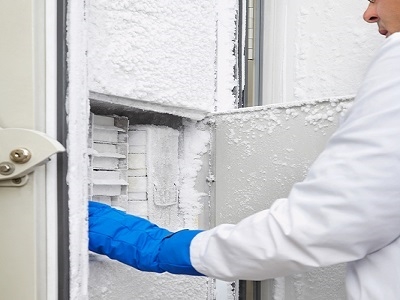Freezer Challenge Competition
Cornell participates in the annual International Laboratory Freezer Challenge, hosted by the International Institute for Sustainable Laboratories (I2SL) and My Green Lab. Participating labs compete against fellow Cornell laboratories and campuses from around the world as they are guided in implementing best practices in cold storage management to achieve greater energy efficiency, sample integrity, and sample access.
What should I know before I sign up?
The Freezer Challenge provides participating labs with simple solutions on a weekly basis to save energy. You are then prompted to record success in order to compete with other labs!
-
WHO: All laboratories from all sectors with cold storage can participate.
-
PRIZES: All participating labs will be entered to win a deluxe pizza party for their teams. Winners of the international competition will be recognized in Nature Magazine and at the 2023 I2SL Conference in September.
-
QUESTIONS? Contact info@mygreenlab.org or sustainability@cornell.edu
Why should I participate?
Laboratories are the greatest source of energy use on campus. That means lab spaces have a huge impact when implementing energy efficiency measures. By reducing energy waste, we save money and carbon emissions that contribute to climate change, helping Cornell reach our goal of carbon neutrality by 2035.
Across 2 years of participation Cornell labs has saved 86,000 kWh per year. 222 labs from over 100 different research institutions participated this year, representing 17 countries. The combined efforts of the scientists and labs participating in the 2021 Freezer Challenge saved 4.6 million kWh of electricity over the past year, which is the equivalent of reducing carbon emissions by 3,260 metric tons.
Get your laboratory engaged with doing science in more sustainable ways – the Freezer Challenge benefits your research and the planet.
Campaign Goals
Ultra Low Freezers ULT) are ULTs are some of the largest energy consumers found in labs. Creating awareness of ULT maintenance and resources Cornell labs will contribute to reducing greenhouse emissions. As a result of a lab survey done earlier this year we are focusing on: Defrosting, Maintenance, Inventorying samples and Purchasing Choices.
Fast Fact
ULTs 15 years or older use 28-35 kWh per day, as much energy as an average single-family home uses in a day
OUR GOALS AT CORNELL for this campaign include:
-
Defrosting ULTs
-
Maintaining ULTs | Cornell Air Conditioning & Refrigeration Shop (ACR)
Regular maintenance can reduce today's ULT freezer energy consumption by as much as half. -
Inventorying Samples.
Removal of unneeded or unviable samples from cold storage units, freeing up that space for new samples without having to purchase additional refrigerators and freezers. -
Purchasing Wisely
You can save $1,674 or more by buying ENERGY STAR.
Take Action
|
When, and how, to do a full freezer defrost? |
|
Cornell University is working to centralize inventories of ultra-low freezers (ULTs) on campus to better understand energy usage and climate impacts of our ULT plug-loads, especially as they age. A centralized inventory will provide insights into how many freezers we have on campus, how they perform, and how they are managed. This will inform future energy conservation projects here at Cornell, as well as our campus participation in the annual Freezer Challenge.
We ask all labs to complete this ULT freezer survey during Summer 2022. Since we have hundreds of labs on campus, we need your help gathering information about ULTs in your specific lab(s). If you have an existing inventory, feel free to upload a copy within the Qualtrics survey to save time. All labs that complete the survey will receive enduring gratitude from our team and knowledge that you are contributing to a more sustainable campus.
More resources for laboratories
Cornell University Green Lab Program
Cornell's Green Lab Certification assists lab users in reducing energy and material waste, and improving overall lab sustainability by providing a checklist of potential actions and levels of achievement to help celebrate accomplishments as a team. We have many materials already created to help you quickly identify energy, water, and other areas of impact.
